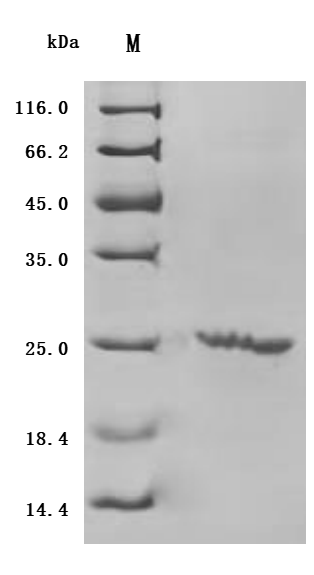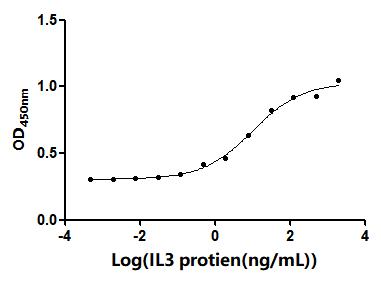Inserting the gene encoding the Human IL3 protein (20-152aa) into a plasmid vector results in the creation of recombinant plasmid, which is introduced into e.coli cells. e.coli cells that can survive in the presence of a specific antibiotic are selected, indicating successful uptake of the recombinant plasmid. The e.coli cells containing the recombinant plasmid are cultured under conditions promoting the expression of the gene of interest. A C-terminal 6xHis tag is linked to the protein. After expression, affinity purification is used to isolate and purify the recombinant Human IL3 protein from the cell lysate. Denaturing SDS-PAGE is then applied to resolve the resulting recombinant Human IL3 protein, revealing a purity level exceeding 85%.





